You are here
New Releases
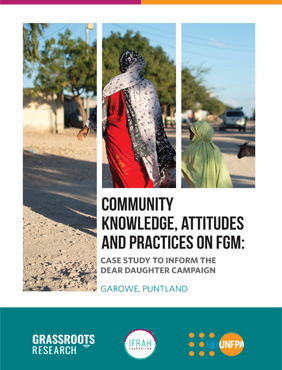
Community Knowledge, Attitudes and Practices on FGM_Puntland
Female Genital Mutilation (FGM) is a procedure in which the external genitalia of girls and women are partially or completely removed and/or infibulated without medical reasons. The procedure causes lifelong physical, psychological, and reproductive health problems for the woman. Heavy bleeding and problems with urination and menstruation, as well as infections, fistulas, and complications of labor and delivery are possible risks. In spite of the health complications, practicing communities and especially women perpetuate the practice as a social norm and religious duty. The circumcised girl, her mother, and the family benefit socially since an underlying belief exists that FGM ensures premarital virginity, increases the girl's chances of marriage, and provides ritual cleanliness. Globally, FGM practice is concentrated in Africa, the Middle East, and Asia, where more than 200 million women and girls are circumcised. Somalia, including Puntland, features one of the highest prevalence rates of FGM in the world as nearly 98% of girls and women are affected. Shifts in practice toward a milder form and medicalization of the practice are occurring, while high prevalence rates remain steady. Medicalization of the practice assumes that girls are cut in hospitals, supposedly under improved hygienic conditions to reduce harm, rather than by traditional female circumcisers with knives and scissors in their homes. Anti-FGM campaigns and health practitioners recognize that it is a deceptive step toward total elimination of FGM.
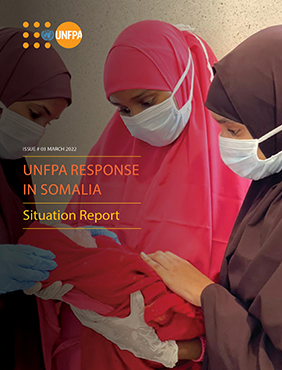
Somalia Situation Report March 2022
The severe drought in Somalia has deteriorated the situation of women and girls. As per the recent Somalia Water and Land Information Management (SWALIM) drought monitoring, based on field reports and the Combined Drought Index (CDI), about 80 per cent of the country is facing extreme drought conditions.
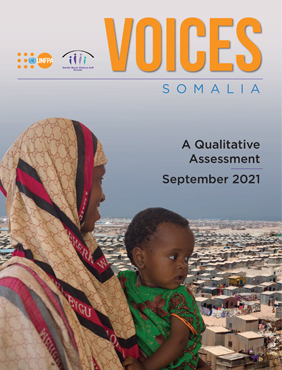
Voices From Somalia Report - September 2021
Spanning over 30 years, the ongoing crisis in Somalia has significantly impacted the most vulnerable populations, such as women and children, many of whom have only ever known insecurity. While Somaliland has experienced increased peace and security, conflicts continue to erupt along the disputed land with Somalia. The Voices report is the first publication dedicated to exploring specific violence risks affecting women, girls and other vulnerable persons; what type of violence these vulnerable groups experience; how they cope with these risks; and whether specialized services are available and accessible to them.
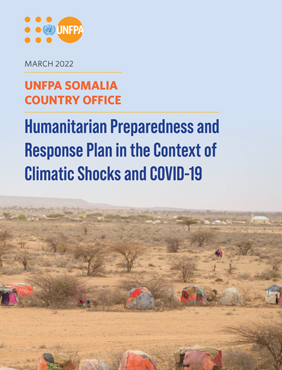
UNFPA Humanitarian Preparedness and Response Plan - March 2022
The drought has worsened across Somalia, with an estimated 4.3 million people affected of whom 554,000 have abandoned their homes in search of water, food, and pasture. Food insecurity is increasing and malnutrition is high in drought-affected areas.
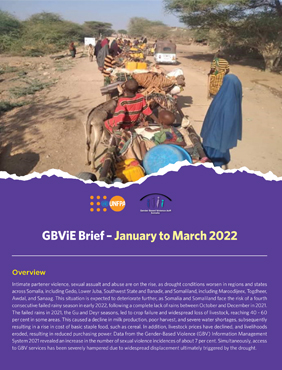
GBViE Brief – January to March 2022
Intimate partener violence, sexual assualt and abuse are on the rise, as drought conditions worsen in regions and states across Somalia, including Gedo, Lower Juba, Southwest State and Banadir, and Somaliland, including Maroodijeex, Togdheer, Awdal, and Sanaag. This situation is expected to deteriorate further, as Somalia and Somaliland face the risk of a fourth consecutive failed rainy season in early 2022, following a complete lack of rains between October and December in 2021.
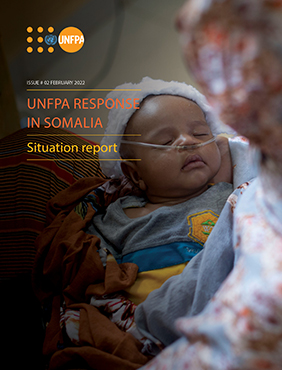
UNFPA Somalia Humanitarian Situation Report- February 2022
The number of people affected by the severe drought has increased from 3.2 million people in December 2021 to about 4.3 million people in February 2022. Consequently, the number of Internally Displaced People (IDPs) has more than doubled from 245,000 to 554,000 people. A total of 7.7 million Somali women, men, and children are estimated to require humanitarian assistance in 2022, including around 2 million women of reproductive age. The negative impact of the drought on Somali women and girls has been reported across several platforms and is already visible.
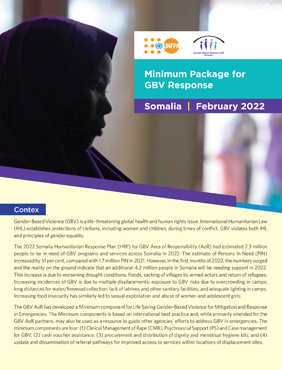
Minimum Package for GBV Response
Gender-Based Violence (GBV) is a life-threatening global health and human rights issue. International Humanitarian Law (IHL) establishes protections of civilians, including women and children, during times of conflict. GBV violates both IHL and principles of gender equality.
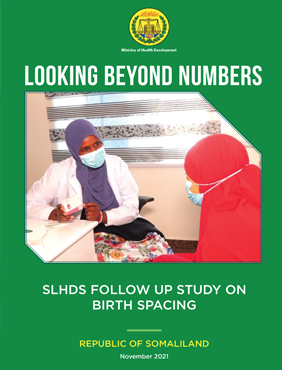
SLHDS follow up study on Birth Spacing_Somaliland
The report provides information on the key underlying factors behind low uptake of birth spacing services. We hope these findings will guide interventions tailored for birth spacing programmes and improve the lives of women and girls in Somaliland. Additionally, the findings will assist in understanding the impact of the existing interventions towards promoting safe motherhood and inform future programmes that would contribute to behavioral change and increase the tendency of spacing children appropriately hence providing enough space for children to grow. Finally, it will help the government and partners to formulate appropriate programmes for increasing efforts towards promoting child and maternal health.
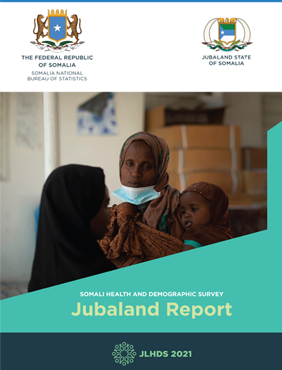
Jubaland Report_ Somali Health and Demographic Survey
The Jubaland Health and Demographic Survey is a representative household survey that provides reliable data on health, nutrition, and the demographic characteristics of Jubaland. The survey was implemented by the Somali National Bureau of Statistics (SNBS) and the Ministry of Health and Human Services (MoH) of the Federal Government of Somalia in partnership with the Ministry of Health and Social Care (MoH) and Ministry of Planning and International Cooperation (MoPIC) of Jubaland State of Somalia.
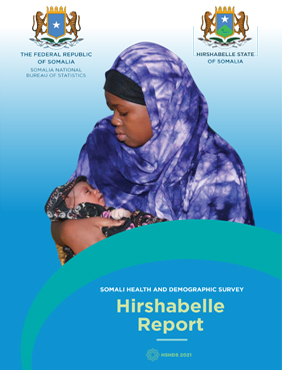
Hirshabelle Report_Somali Health and Demographic Report
The Hirshabelle Health and Demographic Survey is a representative household survey that provides reliable data on health, nutrition, and the demographic characteristics of Hirshabelle. The survey was implemented by the Somali National Bureau of Statistics (SNBS) and the Ministry of Health and Human Services (MoH) of the Federal Government of Somalia in partnership with the Ministry of Health and Human Services (MoH) and Ministry of Planning, Investment and International Cooperation (MoPIIC) of Hirshabelle State of Somalia. The survey marks the first time that such data has been produced in the history of the State, which targeted women between the ages of 15-49 and children under the age of five years from randomly selected households across the State.